Configure getAbstract for automatic user provisioning
This tutorial describes the steps you need to perform in both getAbstract and Microsoft Entra ID to configure automatic user provisioning. When configured, Microsoft Entra ID automatically provisions and deprovisions users and groups to getAbstract by using the Microsoft Entra provisioning service. For important details on what this service does, how it works, and frequently asked questions, see Automate user provisioning and deprovisioning to software as a service (SaaS) applications with Microsoft Entra ID.
Capabilities supported
- Create users in getAbstract.
- Remove users in getAbstract when they don't require access anymore.
- Keep user attributes synchronized between Microsoft Entra ID and getAbstract.
- Provision groups and group memberships in getAbstract.
- Enable single sign-on (SSO) to getAbstract (recommended).
Prerequisites
The scenario outlined in this tutorial assumes that you already have the following prerequisites:
- A Microsoft Entra tenant.
- One of the following roles: Application Administrator, Cloud Application Administrator, or Application Owner.
- A getAbstract tenant (getAbstract corporate license).
- SSO enabled on Microsoft Entra tenant and getAbstract tenant.
- Approval and System for Cross-domain Identity Management (SCIM) enabling for getAbstract. (Send email to b2b.itsupport@getabstract.com.)
Step 1: Plan your provisioning deployment
- Learn about how the provisioning service works.
- Determine who will be in scope for provisioning.
- Determine what data to map between Microsoft Entra ID and getAbstract.
Step 2: Configure getAbstract to support provisioning with Microsoft Entra ID
Sign in to getAbstract.
Select the person icon located in the upper-right corner, and select the My Central Admin option.
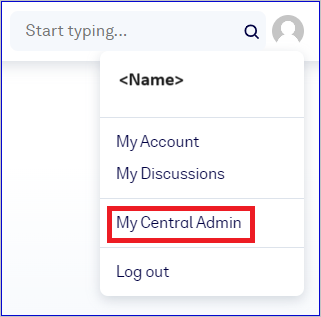
At the left side menu, click on User Management and click on the configure scim button.

Select Go.

Click on the Generate new token button.

If you're sure, then select Generate new token button. Otherwise, select Cancel.
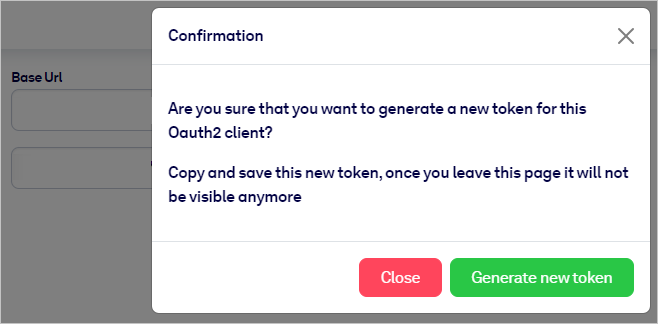
Lastly, you can either click on the copy-to-clipboard icon or select the whole token and copy it. Also make a note that the Tenant/Base URL is
https://www.getabstract.com/api/scim/v2. These values will be entered in the Secret Token and Tenant URL boxes on the Provisioning tab of your getAbstract application.
Step 3: Add getAbstract from the Microsoft Entra application gallery
Add getAbstract from the Microsoft Entra application gallery to start managing provisioning to getAbstract. If you've previously set up getAbstract for SSO, you can use the same application. We recommended that you create a separate app when testing out the integration initially. Learn more about adding an application from the gallery, see this quickstart.
Step 4: Define who will be in scope for provisioning
You can use the Microsoft Entra provisioning service to scope who will be provisioned based on assignment to the application or based on attributes of the user or group. If you choose to scope who will be provisioned to your app based on assignment, you can use the following steps to assign users and groups to the application. If you choose to scope who will be provisioned based solely on attributes of the user or group, you can use a scoping filter as described in Provision apps with scoping filters.
When you assign users and groups to getAbstract, you must select a role other than Default Access. Users with the default access role are excluded from provisioning and will be marked as not effectively entitled in the provisioning logs. If the only role available on the application is the default access role, you can update the application manifest to add more roles.
Start small. Test with a small set of users and groups before you roll out to everyone. When scope for provisioning is set to assigned users and groups, you can control this option by assigning one or two users or groups to the app. When scope is set to all users and groups, you can specify an attribute-based scoping filter.
Step 5: Configure automatic user provisioning to getAbstract
This section guides you through the steps to configure the Microsoft Entra provisioning service to create, update, and disable users or groups in TestApp based on user or group assignments in Microsoft Entra ID.
Configure automatic user provisioning for getAbstract in Microsoft Entra ID
Sign in to the Microsoft Entra admin center as at least a Cloud Application Administrator.
Browse to Identity > Applications > Enterprise applications.
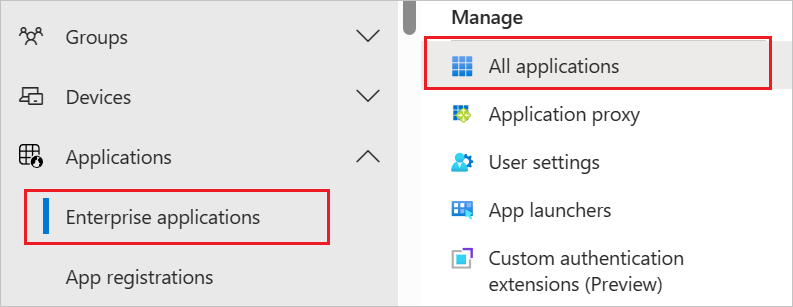
In the list of applications, select getAbstract.
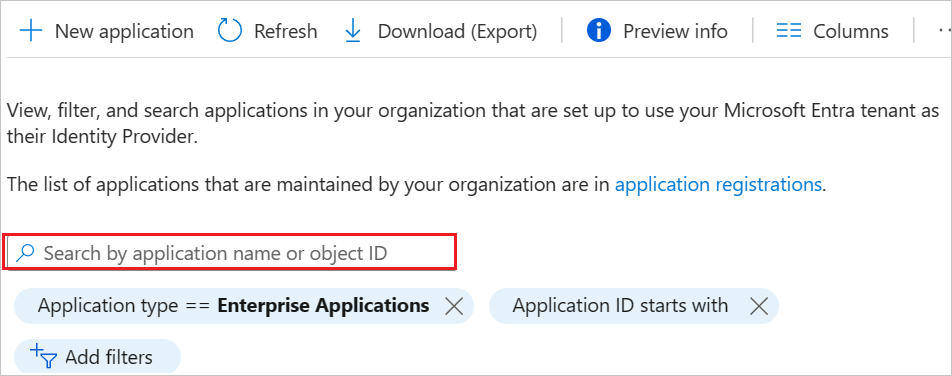
Select the Provisioning tab.
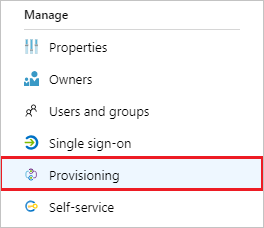
Set Provisioning Mode to Automatic.

In the Admin Credentials section, enter your getAbstract Tenant URL and Secret token information. Select Test Connection to ensure that Microsoft Entra ID can connect to getAbstract. If the connection fails, ensure that your getAbstract account has admin permissions and try again.

In the Notification Email box, enter the email address of a person or group who should receive the provisioning error notifications. Select the Send an email notification when a failure occurs check box.

Select Save.
In the Mappings section, select Synchronize Microsoft Entra users to getAbstract.
Review the user attributes that are synchronized from Microsoft Entra ID to getAbstract in the Attribute Mapping section. The attributes selected as Matching properties are used to match the user accounts in getAbstract for update operations. If you change the matching target attribute, you'll need to ensure that the getAbstract API supports filtering users based on that attribute. Select Save to commit any changes.
Attribute Type Supported for filtering userName String ✓ active Boolean emails[type eq "work"].value String name.givenName String name.familyName String externalId String preferredLanguage String Under the Mappings section, select Synchronize Microsoft Entra groups to getAbstract.
Review the group attributes that are synchronized from Microsoft Entra ID to getAbstract in the Attribute Mapping section. The attributes selected as Matching properties are used to match the groups in getAbstract for update operations. Select Save to commit any changes.
Attribute Type Supported for filtering displayName String ✓ externalId String members Reference To configure scoping filters, see the instructions provided in the Scoping filter tutorial.
To enable the Microsoft Entra provisioning service for getAbstract, change Provisioning Status to On in the Settings section.

Define the users or groups that you want to provision to getAbstract by selecting the desired values in Scope in the Settings section.

When you're ready to provision, select Save.

This operation starts the initial synchronization cycle of all users and groups defined in Scope in the Settings section. The initial cycle takes longer to perform than subsequent cycles, which occur approximately every 40 minutes as long as the Microsoft Entra provisioning service is running.
Step 6: Monitor your deployment
Once you've configured provisioning, use the following resources to monitor your deployment:
- Use the provisioning logs to determine which users were provisioned successfully or unsuccessfully.
- Check the progress bar to see the status of the provisioning cycle and how close it is to completion.
- If the provisioning configuration seems to be in an unhealthy state, the application will go into quarantine. To learn more about quarantine states, see Application provisioning status of quarantine.
Additional resources
- Managing user account provisioning for enterprise apps
- What is application access and single sign-on with Microsoft Entra ID?